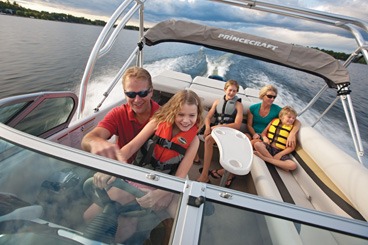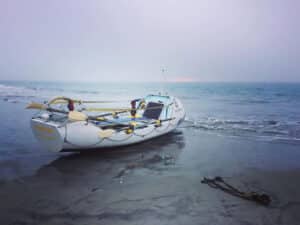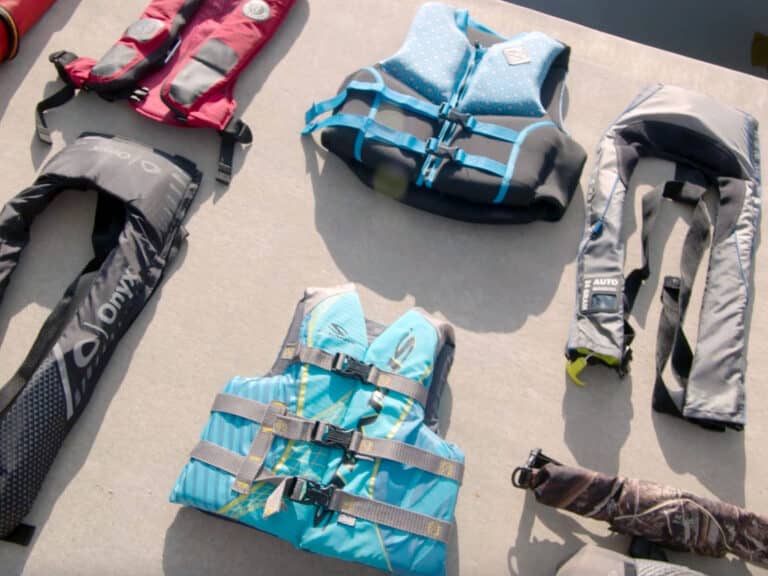
In boating, there are social taboos and safety taboos — and while the former might leave some boating pals offended, the latter can leave them waiting for an ambulance.
One example of a social taboo is hopping on board wearing heavily lugged black rubber soles. Ideally, guests should remove their shoes upon boarding. Nobody gets bloodied over that slip of protocol, but you might like to know about it so you don’t look obtuse next time you’re invited aboard a friend’s boat. Or, in case you’re inviting friends aboard, you don’t have to feel conspicuous about asking them to kick off their kicks. My tactic is to open a deck locker on my boat and invite my friends to drop their shoes inside where they’ll be secure for the day. Handled correctly, you’ve offered your guests a convenience for the safety of their shoes and set the tone for a relaxed day of barefoot cruising.
Safety taboos are far more serious, of course. Here are some to avoid if you want to keep your crew safe.
Breaking the Most Important Rule
Few people would take up tennis, golf or bowling without understanding the rules. However, I run into people every day who think boating is like driving a car but with a propeller. And then there are those who say that rules were made to be broken.
Boating rules are different. There are hard and fast steering rules designed to help boaters avoid collisions, of course, but they only work when both parties know the rules. Sadly, some boaters learn all of the rules except the one that I’ll paraphrase here: No matter what the rules say, it’s your job to do whatever you can to avoid a collision. Here’s a poem that perfectly summarizes the risk of rigidity:
“Here lies the body of Johnny O’Day
Who died Preserving His Right of Way.
He was Right, Dead Right, as he sailed along
But he’s just as dead as if he’d been wrong”
Wearing Any Old Life Jacket — or None
Boaters come in all types and sizes. So do life jackets. Make sure passengers have a life jacket that fits them before you disembark. A proper fit means the life jacket fits snugly and won’t ride up around the head, but still allows adequate arm mobility. Life jackets are rated on the USCG label inside for the weight class they are designed to serve. Putting a 90-lb. kid in an extra large life jacket won’t do in an emergency — the child will slide right out of it. I’ve seen it happen. Life jackets only work when you wear them and they fit.
Ignoring the Kill Lanyard
Your boat is equipped with a kill lanyard and I’ll bet you don’t use it. I have one too, and I’ve been guilty of that omission a time or two, myself. I was even thrown from the helm once and was fortunate I was able to regain my footing before anything bad happened. I know one boater who fell overboard while underway and when the unmanned boat circled back to him, he tried to get back aboard. He recovered from the gruesome results, but has some creepy looking scars to commemorate the event. Use your kill lanyard. Failing to do so could be as deadly as failing to use a life jacket.
Leaving a Fender Hanging
At first glance, the captain skimming down the waterway with his rubber fender hanging overboard just looks like a buffoon. But should he cross a stiff wake, and should the crest of that wake slap the fender smartly, the force might just sling it right over the gunwale and into a passenger’s face. It’s dangerous to leave a fender hanging out while underway — and dangerous looks dumb.
Using People as Fenders
A common rookie mistake is to turn the crew into fenders. Even a small runabout can have enough mass and momentum to cripple a boater who tries to get between a captain’s piloting error and the dock. Before approaching a dock, the skipper should hand his crew fenders and tell them where he wants them deployed. Typically, the best way to handle fenders while docking is to secure them to the stern and midships cleats. If the dock is a “moving target” with excessive wind and current that will unpredictably affect the impact of the boat, one crewmember should be coached to hold a fender over the side by a length of rope allowing it to dangle in the “crush zone.” If conditions cause that crush zone to move, the fender can be dragged fore or aft to meet the new contact point. Your crew will look smart handling things this way and your boat will stay smart-looking with a minimum of scratches.
Fueling Foolishly
When fueling your boat, NEVER forget that gasoline fumes are as volatile as they are toxic. Plus, they’re heavier than air. Have your crew leave the boat and head to the chandlery for a moment of air-conditioned shopping while you prep the boat for re-provisioning. Close all hatches and doors so fumes can’t creep into enclosed compartments. When the fueling is done, wait at least 5 minutes before activating ANYTHING on board, including the bilge fan. First sniff around until the air is clear of fuel fumes, then start the bilge fan. Wait another 5 minutes before re-boarding your crew and starting your engines.
**
Boating Without an Anchor**
Most boaters don’t look at an anchor as a safety device, but that’s what it is. You need it even if you don’t plan to anchor. It’s the unplanned anchorages this device protects you from. Say an engine fails and the surf is pushing you ashore. That’s not a problem on a calm day — if you don’t mind being grounded. But on a high surf day, the closer you come to shore, the more violent the pummeling of the surf. Boating in a river or tidal current can be just as dangerous without an anchor. That stalled vessel can be upturned if it’s swept across an underwater snag or if it drifts beneath a low bridge or dock that snags its windshield. Make sure you have an anchor handy that fits your boat and is equipped with plenty of rope and a length of chain nearest the anchor. The chain? It holds the shank of your anchor down so the flukes or tines can bite into the bottom.
Jumping Ship
Here’s one that no one should be patient with. Kids are guilty of it and I’ve seen too many adults do it, too. The boat approaches the dock and one nimble nut scrambles up on the gunwale and leaps to the dock. YouTube is populated with the highly comedic but often dangerous results. For every action there is an equal and opposite reaction: Leaping from the boat will cause it to move from the dock, often lengthening the distance beyond the jumper’s reach. It also pushes the boat off course, turning an uneventful landing into a boat-dinging disaster. Warn your crew of the dangers as you approach the dock and keep an eye peeled for any mutinous leaper who can’t wait until the lines are lashed and the boat is secured.
Not Having a Reboarding Ladder
A reboarding ladder is essential safety gear. Fortunately, the National Marine Manufacturers Association requires boats be equipped with one that can be deployed from within the water. If your boat doesn’t have one, get one. You can add a bolt on boarding platform with drop down ladder, or you can add a dive ladder that clamps to the transom when not in use. Trying to climb up on a slippery cavitation plate on the outboard or sterndrive gearcase is a good way to sever the tendons in your foot or suffer a life-threatening gash in your leg. The props are sharp, and they’re right below the narrow plate that many boaters use for a step — which is a bad idea.
* * * * *
The U.S. Coast Guard is asking all boat owners and operators to help reduce fatalities, injuries, property damage, and associated healthcare costs related to recreational boating accidents by taking personal responsibility for their own safety and the safety of their passengers. Essential steps include: wearing a life jacket at all times and requiring passengers to do the same; never boating under the influence (BUI); successfully completing a boating safety course; and getting a Vessel Safety Check (VSC) annually from local U.S. Coast Guard Auxiliary, United States Power Squadrons(r), or your state boating agency’s Vessel Examiners. The U.S. Coast Guard reminds all boaters to “Boat Responsibly!” For more tips on boating safety, visit www.uscgboating.org.








